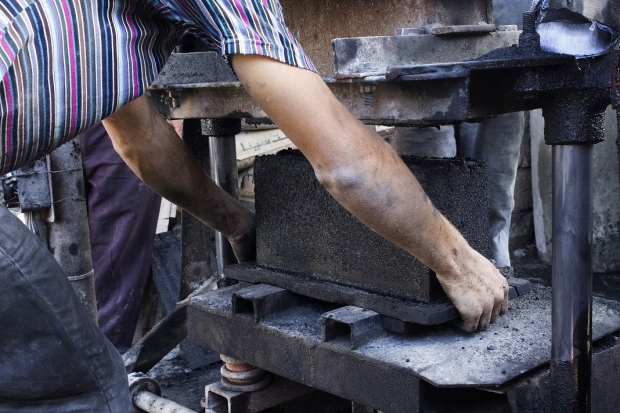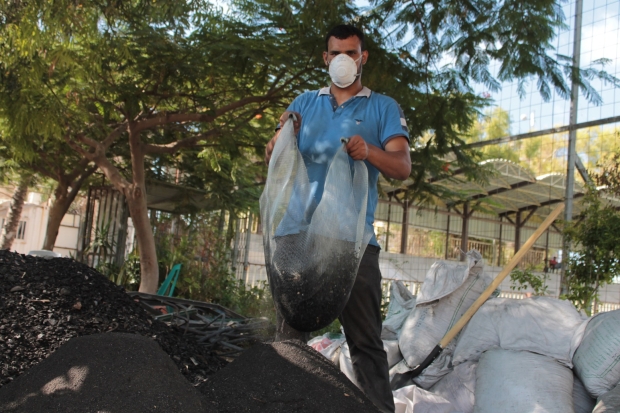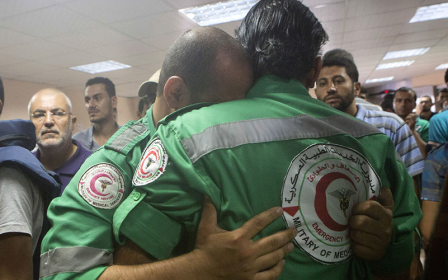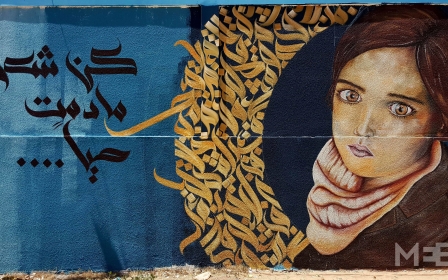Rebuilding Gaza: 'Green Cake' could be the phoenix rising from Gaza's ashes
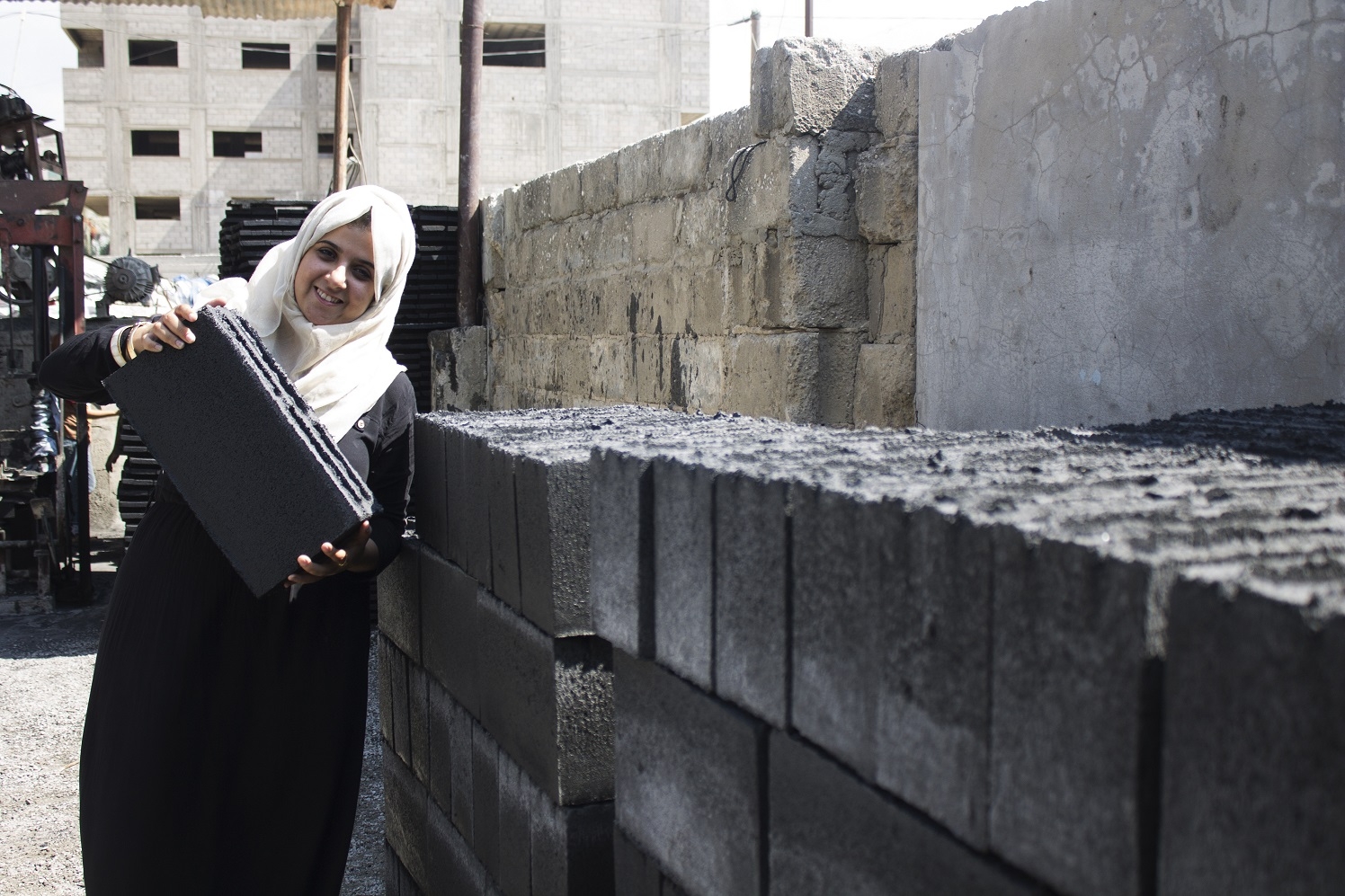
GAZA CITY - Majd Mashhrawi hauls a block and places it on the table.
“This was one of our prototypes,” she said.
To the untrained eye, the block appears not unlike the grey slabs of concrete ubiquitous to Gaza’s cityscape, but for Mashhrawi, 22, it is the answer to the besieged area’s perennial cement shortage.
Since her university days studying civil engineering at Gaza’s Islamic University, Mashhrawi has been trying to develop an alternative to the material so vital to Gaza’s desperate need for reconstruction in the face of siege and war.
Last year, she and her business partner, Rawan Abdulatif, came up with “Green Cake,” an alternative for concrete that reuses coal ashes at a cost of 25 percent less than normal construction blocks.
Critics argue their product has yet to stand the test of time, but Mashhrawi already has customers drawn to the cheap price and availability.
'Cement is like water'
“In Gaza, cement is like water,” she said, speaking from her Gaza City office.
The Israeli government imposed a blockade on Gaza in response to the election of the Hamas government in 2006, restricting the movement of goods it deemed to be of “dual use”.
In other words, everyday materials used by residents that might also be used to build tunnels and weapons by Hamas fighters.
This process has slowed Gaza’s construction sector, rendered thousands jobless and left many waiting for materials to complete half-finished homes.
The July 2014 war between Israel and Hamas, which left 17,000 homes destroyed or damaged and rendered 100,000 people homeless, according to the UN, only exacerbated these pre-existing construction issues.
Fadia Najjah, 60, still remembers the rooms of her three-storey house in Khoza’a, a Gazan town hard-hit during the war.
Two years later, Najjah still lives with her family of six in a tin-sheet home in the outskirts of the town, donated by Qatar and the United Arab Emirates.
“After the war, I was happy to have a place. But I thought it would only be for a few months,” she said sitting in her makeshift home. “Every time I go to the Ministry [of Public Works] they tell me building has been delayed.”
Ashes to bricks
It was in this context Mashhrawi realised alternative construction materials were in dire need. She was not alone; others too have ventured to find a locally sourced alternative to cement, but have fallen short.
“We found that we cannot replace cement entirely, we can reduce the amount we use in the mixture but we cannot replace it,” she said.
Mashhrawi began examining aggregate and sand, the other two ingredients essential in making concrete that are also imported from Israel.
“I thought, instead of having three problems, we could just have one,” she explained,
Learning that Gazan asphalt factories produce 80 tonnes of ash - a byproduct of coal and wood combustion - per week, she had an idea.
“We thought, how can we replace these two components with one and solve an environmental problem?”
Instead of burying the ash in the sand, a common practice in Gaza that creates environmental hazards, Mashhrawi would reuse the ash as a filler for blocks.
Green Cake is born
Next came the tests. The first prototype created by Mashhrawi and her team needed to pass a compressive strength test, crucial for any building material to ensure it would not crumble under the weight of several storeys.
The team also conducted absorption tests for rain, gravity tests for weight and fire tests.
“Green because it’s environmentally friendly, cake because it is light,” she explained.
Armed with a grant from the Islamic University, Mashhrawi started producing more blocks from a factory.
In August 2016, she had her first client who commissioned her team to build an external wall with 1000 blocks.
Only time will tell
There is only one test Green Cake has yet to pass: time.
“We can’t say that this thing is durable now, we can after 10 years maybe. As [it] is an unused byproduct and we’re using it as a filler. I think it will be durable because it won’t react with cement," Mashhrawi said.
“Majd’s project is so important,” said Asim al-Nabih, an official at the Gaza municipality.
“Gaza is under siege and life is very difficult, so Majd is doing something good because her project brings us a cheaper, lighter alternative that can be made with almost nothing," he added.
Mashhrawi cannot accept large-scale projects because of funding issues. The Gaza municipality and Islamic University have agreed to provide partial funding, but this is not enough.
Green Cake has gone on to compete for several international entrepreneurial prizes. However, the team can rarely exhibit the product to international funders outside of Gaza because of movement limitations imposed by Israel.
Mashhrawi also faces resistance from Gazans themselves, as many express an unwillingness to take a risk and invest in Green Cake.
“If you want to start a new business in Gaza you have to be courageous,” she said. “People here don’t change their minds easily. They need time and this is what’s taking up most of our efforts. We spent three months trying to prove to people it is an adequate alternative.”
Opportunity and the future
Reminding people of its extremely good value has had some effect. A truckload of sand, for example, costs around $200, but for the same quantity of ash, clients only pay $25.
“It’s very cheap, that’s what gets people’s attention,” she said.
Mashhrawi is still driven by the initial question that inspired Green Cake. Study after study has proven that there is no real alternative for cement that is equivalent in quality and durability, but Mashhrawi believes she can uncover one with the use of geopolymers, which is made with inorganic materials such as aluminosilicate.
“Cement is made of silicate, it is something organic found in nature and can last for hundreds of years, but geopolymer is made of chemical components like potassium dioxide and many alkalis, so it’s not something that can last for long, but for now it’s ok. It’s not as good as cement, according to the research, but for our situation it’s good,” she explained.
But how can Green Cake make a difference for Gaza’s immediate future? As the project gains steam, Mashhrawi intends to open a factory and hire hundreds of workers, providing opportunities for the nearly 43 percent of unemployed Gazans according to a World Bank report.
She hopes one day Gaza will be less reliant on construction imports as a result of Green Cake.
“Green Cake is good as long as we care about the process of constantly improving it,” she said. “We are still in the early days but I am hopeful.”
This article is available in French on Middle East Eye French edition.
New MEE newsletter: Jerusalem Dispatch
Sign up to get the latest insights and analysis on Israel-Palestine, alongside Turkey Unpacked and other MEE newsletters
Middle East Eye delivers independent and unrivalled coverage and analysis of the Middle East, North Africa and beyond. To learn more about republishing this content and the associated fees, please fill out this form. More about MEE can be found here.



